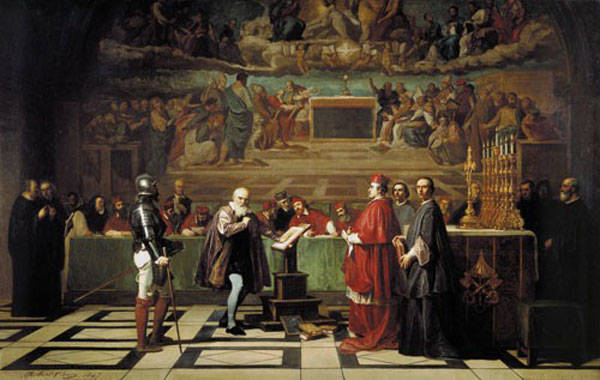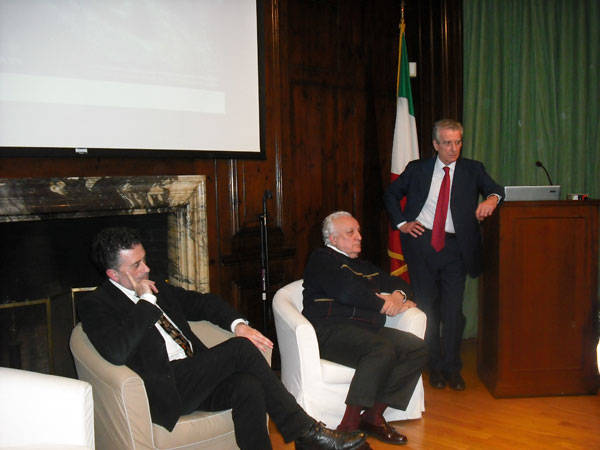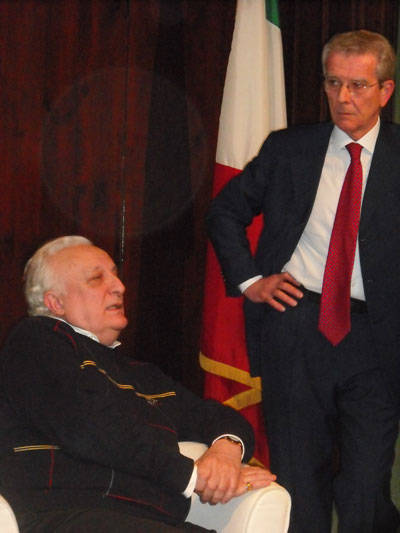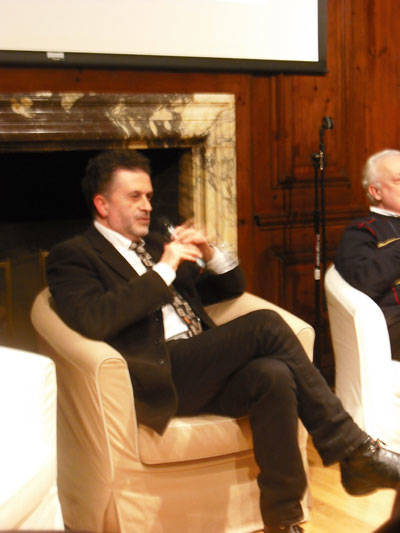Galileo Galiei in the Past, Present, and Future
Four hundred years since Galileo Galilei’s initial telescopic observations, the Italian Cultural Institute of New York in collaboration with ISSNAF (The Italian Scientists and Scholars in North America Foundation) and the Consulate General of Italy in Newark hosted a roundtable discussion on Thursday, December 10 as part of a seminar series on Italian scientific culture in New York.
The debate was moderated by Professor Giorgio Einaudi, scientific director of the ISSNAF and included presentations by two important scientists: Professor Eugenio Coccia, gravitational physics professor at the University of Tor Vergata in Rome and director of the national laboratories of Gran Sasso for the Istituto Nazionale di Fisica Nucleare (INFN), and Professor Vittorio Canuto, scientist emeritus at NASA and physics lecturer at Columbia University and City College of New York.
The short film From Galileo to Hubble was also screened. Filmed inside a space shuttle by astronaut Mike Massimino, the film presents the importance of Galileo’s telescope to the development of future astronomical science.
In his presentation entitled “Gravitation from Galileo to Einstein and Beyond,” Professor Coccia illustrated the revolutionary import of the great scientist’s theories who in 1609 was the first to point his telescope skyward. This allowed him to acquire more accurate information about lunar mountains and the composition of the Milky Way while discovering Jupiter’s satellites, sunspots, and the phases of Venus. It was these findings that gradually substantiated the heliocentric theory already proposed by Copernicus, a theory that Galileo then later proved through the scientific method based on precise mathematical observations. For Galileo, the universe was a great book written in mathematical language with characters such as circles, triangles, squares, and other geometric figures. Without intimately knowing these characters it would have been humanly impossible to understand them.
Using the same observations of the universe and the same scientific method, Galileo continued to research and explore the laws of gravity that govern the movement of stars and planets, definitively reversing the geocentric view held by Aristotle and Ptolemy and paving the way for subsequent studies by Newton and Einstein. Einstein himself called Galileo the father of modern physics, without which it would not have been possible for him to arrive at the modern theory of general relativity.
In his presentation entitled “Galileo and His Crimes,” Professor Canuto meticulously reconstructed the stages of the Tuscan genius’ life, from his preliminary studies until his famous dispute with the Catholic Church, which accused him of heresy, forced him to renounce his theories, and confined him to isolation until his death in 1642.
Immediately following their presentations, Professor Coccia and Professor Canuto opened the floor to take numerous questions from the audience. The audience’s curiosity ranged from scientific issues directly related to their presentations to topics that are more current, such as lack of funds for scientific research, and problems associated with climate change and possible solutions.






































i-Italy
Facebook
Google+
This work may not be reproduced, in whole or in part, without prior written permission.
Questo lavoro non può essere riprodotto, in tutto o in parte, senza permesso scritto.